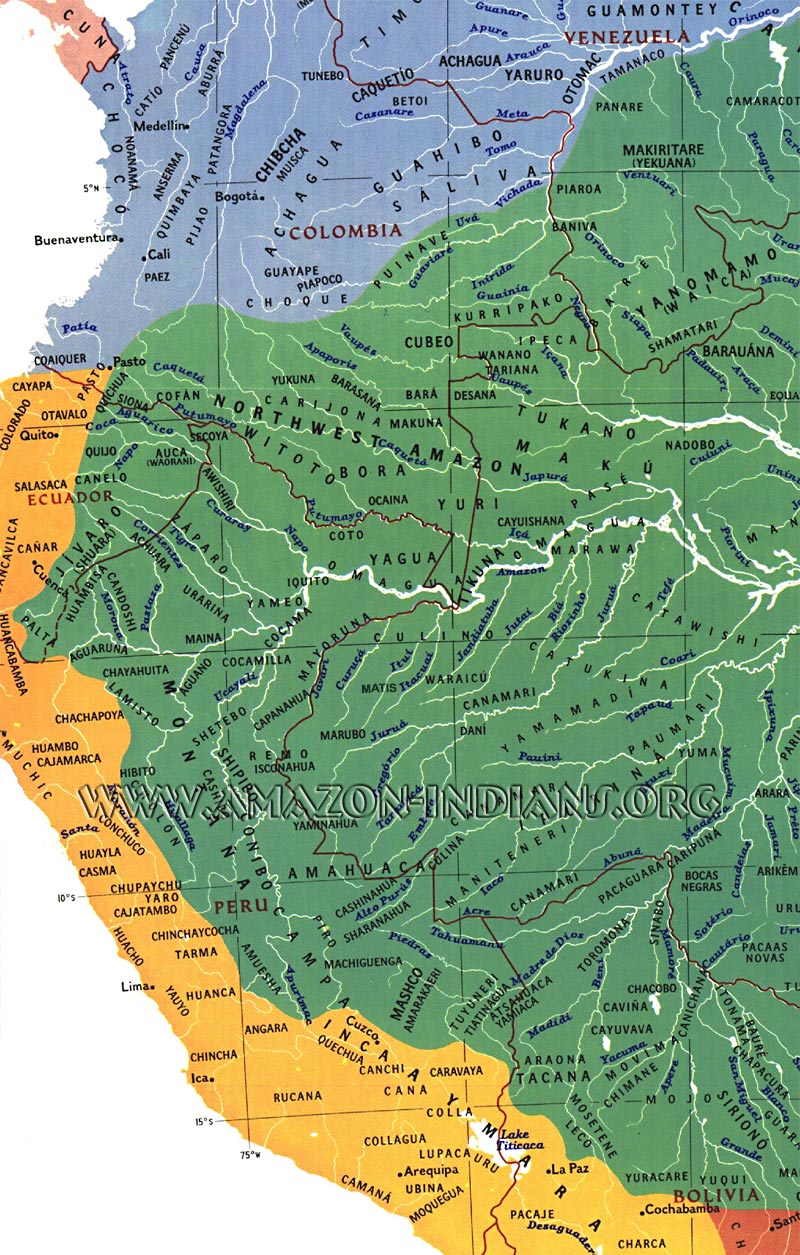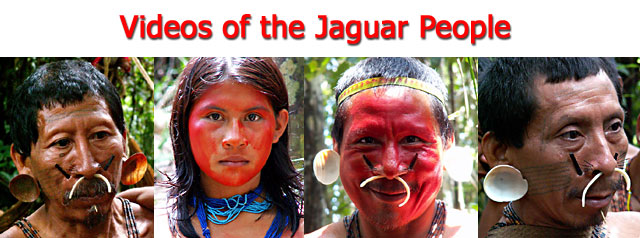|
|
||
|
|
||

|
||
he above map of the Indians of the Western Amazon covers six countries (Bolivia, Brazil, Colombia, Ecuador, Peru, and Venezuela). The Amazon River Basin is colored green in the above map. Many people think of Brazil when they think of the Amazon rainforest and Amazonian natives. However, this map shows that the majority of the western portion of the Amazon is outside of Brazil. In fact, most of Peru is actually located in the Amazon Basin, although most people think of Peru as Andean rather than Amazonian.
The data for the above map comes from the National Geographic Society and was originally made in 1982. Tragically, many of the tribes whose names appear on this map no longer exist. For example, Yameo, a language in the Peba-Yaguan family, was last spoken in the 1960's and became extinct when the last speaker of Yameo died. Similarly, Omagua, a language in the Tupi-Guarani family, is on the verge of extinction with less than 100 speakers and no child speakers. As illustrated on the above map, at one time the Omagua culture extended over a great length of the Amazon River but at present is being overwhelmed by the influence of Spanish and Portuguese-speaking "mestizo" cultures on the main branch of the Amazon River.
Some tribes listed on the above map are also know by other names. For example, the Mayoruna, shown above on the Javari River bordering Brazil and Peru, are more commonly called the Matsés in Peru. Similarly, the Urarina are commonly referred to as the Shimaku by locals. In addition, some of the spellings used in the above map are less common than the more generally used spellings. For example, the Tikuna tribe is most commonly spelled with a "c" (Ticuna). Other examples of less common spellings used on the map are the Culino who are generally called the Culina. The Culina speak an Arauan language and live in both Brazil and Peru.
One interesting feature illustrated in the map is the influence of Andean cultures on the Amazonian peoples. For example, the "Quichua" (often spelled "Kichwa") tribe essentially speak Quechua, the language of the Incas. Quechuan dialects are still spoken in communities along the Corrientes, Napo, Pastaza, and Putumayo Rivers in Ecuador and Peru. In addition, Amazonian cultures have had an influence on those of the Andes, an example being the sacred city of Machu Picchu. Archaeologists excavating Machu Picchu have found numerous artifacts of Amazonian origin pointing to the flow of Amazonian culture to that of the ancient Incans. |
||
| Return to Main Page | Previous Page | Next Page |
| © Copyright 2004-2014 Dan James Pantone, all rights reserved, Map Indians Western Amazon |


